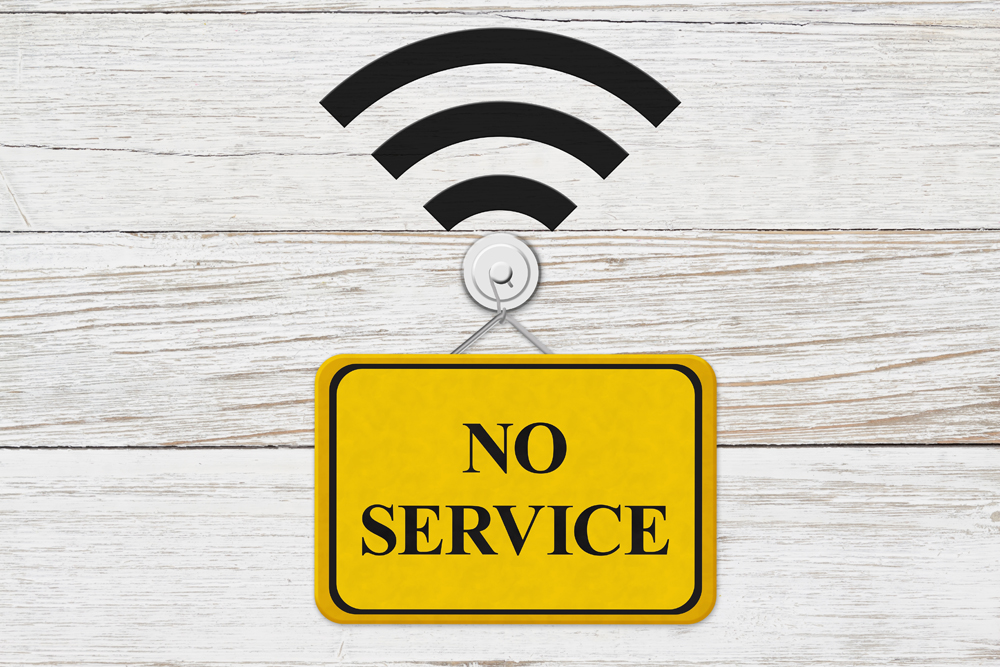We’ve all been in this situation. You try to open a web browser, access your cloud-based PIMS, send an email and it just… spins. No traction, no movement, nothing. Then, from across the room, you hear a co-worker say, “Hey, I think the internet is down.” Cue the chaos, cue the frantic calls to your internet service provider, cue the workarounds to try to keep seeing patients without access to critical data.
Internet outages are a cause for great frustration in the veterinary world. They can have a significant impact on staff morale, client perception, and your clinic’s revenue. Downtime is expensive. You can generally calculate its cost (per hour) by adding lost revenue, lost productivity, recovery expenses, and intangible costs like damage to your practice’s reputation and goodwill. Consider a busy morning when your team is juggling appointments and surgery schedules. An internet outage could delay diagnoses, postpone surgeries, and frustrate clients, leading to lost trust and potential churn.
How Do You Avoid This?
The solution is a properly sized, scoped, and implemented redundant internet service provider (ISP). This isn’t just a luxury; it’s a necessity. Think of it as an insurance policy for your clinic’s operational continuity.
A secondary ISP acts as your backup when your primary provider goes down. When selecting a backup, it’s important to ensure the secondary connection is robust enough to handle the critical needs of your business. For instance, if your primary connection is a high-speed fiber line, your backup might be a coax connection—provided the speeds are sufficient to support your practice management software, cloud-based applications, and any telemedicine services you offer.
Why Not Use Bundled Backups?
Bundled backups, often offered by your primary ISP at a tempting low cost, can be problematic. While they may sound convenient, they come with significant risks:
- Shared Points of Failure: Many outages occur in the provider’s network trunk, which affects both the primary and the bundled backup connections. If they’re using the same infrastructure, the backup won’t help when the main line goes down.
- Inadequate Speeds: These bundled backups often lack the speed and reliability to meet the demands of a busy veterinary practice. Imagine trying to upload DICOM files for a radiology consult or access cloud-based PIMS on a connection that crawls at dial-up speeds.
- Unreliable Activation: There have been cases where bundled backups fail to kick in during an outage, leaving clinics scrambling to find solutions.
What Should You Look For Instead?
- Proper Speeds: It’s essential to match your internet plan to the needs of your practice. Legacy internet plans purchased years ago may no longer suffice. Cloud-based practice management systems, telemedicine platforms, and digital imaging technologies require fast and reliable connections. Work with your software vendors to understand their minimum requirements and ensure your internet plans exceed those benchmarks.
For example, if your vendor specifies a minimum speed of 50 Mbps for optimal performance, don’t settle for less. Having a faster connection ensures smoother operation, especially during peak hours.
- True Redundancy: Your secondary line should come from a completely different ISP and infrastructure than your primary provider. For instance, if your primary provider is Spectrum, consider Cox, AT&T, or another local provider for your backup. Ensure this backup connection meets the minimum requirements for your practice’s critical operations.
Here’s an example: One veterinary clinic in Denver experienced regular outages with their single ISP, leading to frequent disruptions. They implemented a secondary line from a different provider, ensuring their operations continued seamlessly during primary outages. The backup wasn’t as fast as their primary connection, but it was sufficient to keep appointments running and access essential data.
- Static IP Addresses: Many online applications now require IP addresses to be whitelisted for secure access. To meet this need, both your primary and secondary internet connections must have static IP addresses. For instance, if your clinic uses a timecard or punch clock system that relies on IP-based access controls, having static IPs ensures the system functions seamlessly across both connections. Without static IPs, you may face delays or errors when switching between providers, which can disrupt daily operations.
- Avoid Load-Balancing and Failover Solutions: Some network equipment can automatically switch to the backup ISP during an outage through a setup known as load-balancing. The problem with load-balancing is that it can produce mixed results, especially if you are utilizing a VOIP phone solution. Instead, your network should be set up to switch connections from active to passive in the event of an outage.
Practical Steps to Implement a Redundant Internet Setup
- Assess Your Needs: Work with your IT provider to evaluate your internet usage, including peak times and critical applications.
- Research ISPs: Identify local providers that offer reliable services and compare their packages.
- Invest in Equipment: Ensure you have routers and firewalls capable of supporting failover and load-balancing.
- Test Regularly: Conduct periodic failover tests to confirm your backup system works as intended.
By prioritizing a strong and redundant internet setup, you not only mitigate the risks of downtime but also enhance your clinic’s resilience. When your team and clients see that your practice operates smoothly, even during an outage, it reinforces their trust in your professionalism and reliability. In the end, the investment pays for itself in continuity, efficiency, and peace of mind.
To learn more about how the author, William Lindus, and I.T. Guru can help provide your veterinary practice with safe, secure, and stable technology and cybersecurity environments, book a free consultation today!

